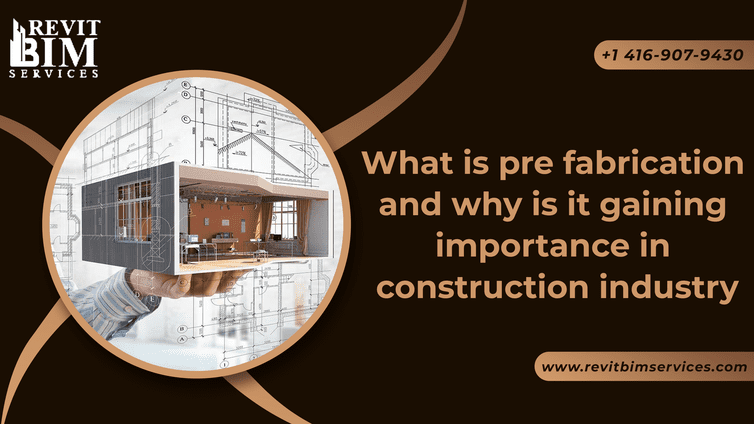
What is Prefabrication and why is it gaining importance in Construction Industry?
Table of Contents
The term prefabrication refers to the process of manufacturing and assembling buildings or the elements used in construction of building at manufacturing site and later transporting those sub-assemblies to the location of the construction jobsite. These sub-assemblies after being taken to construction site are assembled structurally to form a building. There are myths pertaining to the quality of outcome, and also it is thought of as a low-end and mass-produced mode of construction.
However, the reality of offsite or modular construction is actually quite the opposite and is gaining significance in the construction industry, owing to the rise of Building Information Modeling and influence of green building. This article aims to assess the rising significance of prefabrication in construction industry. The following are the few reasons as to why prefabrication is being used, the benefits that can be gained by using prefabricated components and how BIM Services play a role in the process.
1. Improved safety and security
Construction industry can be a hazardous industry for workers to work in. This is because the onsite workers are usually exposed to great heights and hefty equipment. Since sub-assemblies are fabricated in a controlled environment with dry materials moisture, environmental hazards, and dirt problems do not occur or are negligible as compared to on site. Besides, there are extremely strict protocols and procedures in place to ensure the safety of the workers and avoid the on-job injuries within a closed factory environment. The changing ground conditions, winds, and weather conditions that contribute to the increase of likelihood of injury to on site workers, is greatly controlled in the factory. Thus, prefabrication helps in improving the safety and security of the workers drastically.
2. Eco Friendly
The most basic advantages of prefabrication or modular construction can be the reduction in noise, water and air pollution in environment. However, it also has multiple other benefits. As the components are prefabricated in a controlled factory environment they tend to be ecofriendly in the sense that the leftover materials or the byproducts could be recycled which ultimately leads to lower wastage. Conventional construction practice led to more wastage owing to no mechanism for collection or recycling the left materials in an open environment which usually is exposed to wind, light and other environmental factors. The closed space provides better air filtration for better wall insulation, which directly increases efficiency for energy. Along with this, it also helps by reducing pollution, lesser jobsite disturbance, no disruption towards local flora and fauna and provides for streamlined transportation.
Related Posts:
Benefits of Revit in Architectural Projects
New BIM Roles and changing job dynamics in the construction sector
Prefabrication, when coupled with Building Information Modeling, provides with more tangible benefits in terms of cost, time and efficiency. It is widely popular in structural and MEP disciplines wherein the elements are prefabricated and then installed on-site. Utilizing to create coordinated and precise shop drawings ensures that there is no wastage, thereby contributing to the creation of a sustainable building.
3. Time and Cost Efficient
Modular construction takes considerably shorter time as compared to traditional construction in order to build components. This is because of the accurate planning, elimination of on-site weather conditions, and simultaneous construction of multiple assemblies. Also, for modular construction a lot of times the same components are to be fabricated over and over again such as doors, stairs, windows etc. which are to be used in identical arrangements, this increases the speed of creation of components due to redundancy of project. Along with this, a faster turnaround time is achieved by concurrently constructing building components and onsite structure. Thus, increased speed and precision as well as reduced wastage ultimately lead to faster production time which means a decrease in labor cost in the short term, and budget savings in long term.
4. Consistency & Quality Control
In prefabrication a streamline workflow is observed which ensures that the quality of the components is maintained along with the speed of production. The factory-based environment also allows to resort towards more automated approach with the use of Artificial Intelligence like robots or other machinery, which ultimately increases the scope of precision and perpetuate consistency throughout. The production of sub-assemblies is also done keeping uniformity in standards and procedures, after which the generated components are reviewed under quality check for their adherence to quality standards, thus maintaining the consistency and quality of the pre-built materials.
Conclusion:
Prefabrication has gained great popularity in the construction industry due to its approach that induces savings and increases productivity. All in all, modular construction enables time and cost savings along with producing ecofriendly and quality components and hence is specifically helpful to the AEC industry.